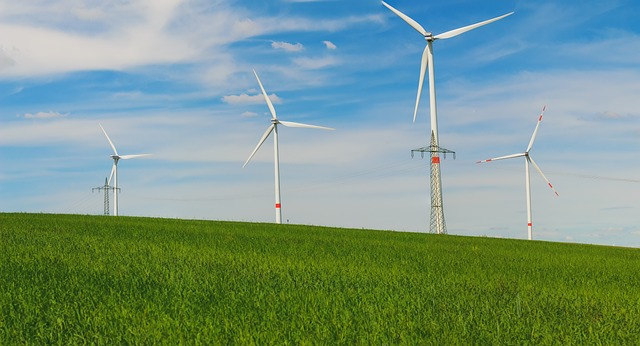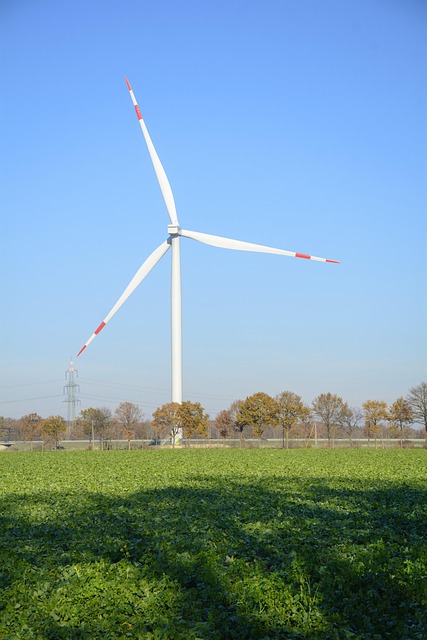Harnessing the Future: The Rise of Wind Power Technologies
In recent years, the world has been experiencing a transformative shift in energy production, driven largely by the urgency to combat climate change and the rapid advancements in renewable technologies. Among these, wind power has emerged as a leading contender, demonstrating an impressive capacity for integration into existing energy systems, while also showcasing incredible potential for future expansion. This article delves into the rise of wind power technologies, exploring their history, current state, innovations, challenges, and the promising future that lies ahead.
The Historical Context of Wind Power
The journey of wind power begins thousands of years ago when humans first harnessed wind energy using sails for maritime trade. The earliest recorded instances of windmills can be traced back to Persia in the 9th century, where they were used to grind grain and pump water. However, it wasn’t until the late 19th century that wind energy began to be explored for electricity generation, with a pioneering wind turbine built by Scottish inventor James Blyth in 1887. Since then, the technological evolution of wind energy has steadily progressed, although it remained a marginal player in the global energy matrix for many decades.
The Current State of Wind Power
Today, wind power stands as one of the fastest-growing energy sectors globally. According to the Global Wind Energy Council (GWEC), as of 2022, the total installed wind power capacity reached over 837 gigawatts (GW), accounting for approximately 10% of the world’s electricity generation. Several countries have emerged as leaders in wind energy deployment, including China, the United States, and Germany.
China leads the charge, with over 290 GW of installed capacity, thanks to massive investments and government policies favoring renewable energy. The U.S. follows closely with around 135 GW, while Germany, with its ambitious energy transition policy (Energiewende), has also made significant strides in enhancing its wind power capacity.
Innovation in Wind Power Technologies
The surge in wind power capacity is largely attributable to continuous innovation in wind turbine technologies. The evolution of turbine design, efficiency improvements, and material advancements has played a crucial role in enhancing energy generation capabilities while reducing costs.
Turbine Design Evolution
Modern wind turbines are a far cry from their early predecessors. They are designed to optimize aerial performance, featuring taller towers, larger rotor diameters, and advanced control systems that allow for dynamic adjustments to changes in wind speed and direction. Some of the most significant innovations include:
- Horizontal Axis Wind Turbines (HAWTs): These are the most common type of wind turbine, characterized by their horizontal rotor shafts. HAWTs can be designed in both small and large scales, making them versatile for various applications.
- Vertical Axis Wind Turbines (VAWTs): Although less common, VAWTs offer unique benefits, such as the ability to capture wind from any direction, reduced noise levels, and lower height requirements.
- Floating Wind Turbines: These groundbreaking technologies are designed for offshore energy generation, allowing for the installation of turbines in deeper waters where winds are typically stronger and more consistent.
Enhanced Efficiency and Reduction in Costs
Technological advancements have not only improved turbine efficiency but have also led to a significant reduction in the cost of wind energy. The cost of onshore wind energy has dropped by nearly 50% over the past decade, making it one of the most cost-effective sources of electricity today. Innovations in materials, design optimization, predictive maintenance through IoT, and larger turbine sizes contribute to this decline in costs.
The Environmental and Economic Impact of Wind Power
Wind power technologies offer substantial environmental and economic benefits. As a clean energy source, wind power contributes to reducing greenhouse gas emissions and air pollution, playing a vital role in combating climate change. Furthermore, wind energy conserves water, as it requires none for operation, contrasting sharply with traditional fossil fuel power plants that consume vast amounts of water for cooling.
Economically, the wind energy sector is a burgeoning source of job creation. The American Wind Energy Association (AWEA) estimates that the U.S. wind sector employs more than 100,000 people and generates billions in new investments. As the industry grows, it fosters a robust supply chain, stimulating local economies and creating additional job opportunities in manufacturing, installation, and maintenance.
Challenges Facing Wind Power Technologies
Despite the remarkable growth and potential of wind power, several challenges persist. For one, the intermittency of wind presents significant integration challenges with existing energy grids. Energy storage solutions, such as battery technology and pumped-storage hydroelectric systems, are essential to mitigating this issue and ensuring a reliable energy supply.
Moreover, public acceptance and the NIMBY (“Not In My Backyard”) phenomenon represent considerable hurdles for wind energy deployment. Concerns regarding noise, visual impact, and effects on wildlife must be addressed through comprehensive stakeholder engagement and robust regulatory frameworks.
The Future of Wind Power Technologies
Looking ahead, the future of wind power technologies appears bright. The global commitment to reducing carbon emissions and achieving net-zero targets by mid-century fervently fuels research and development. Several trends are poised to shape the future landscape of wind energy:
Technological Integration
The integration of smart grid technologies and decentralized energy systems will enhance the reliability of wind power. Innovations in energy management systems, artificial intelligence, and data analytics can optimize turbine operation, improve grid stability, and ensure demand response during peak usage times.
Hybrid Energy Systems
The combination of wind energy with other renewable sources, such as solar and energy storage, can lead to more balanced energy production. Hybrid systems ensure a steadier supply of electricity, mitigating the impact of intermittency and enhancing overall grid resilience.
Policy and Investment
Favorable government policies and sustained investments will be imperative for the continued growth of wind power technologies. Accelerated tax incentives, subsidies for early-stage research, and enhanced support for R&D initiatives will further drive innovation and deployment. As renewable energy becomes a focal point of government agendas worldwide, the collaboration between public and private sectors will be key to overcoming current challenges.
Conclusion
As the world grapples with the climate emergency and seeks sustainable pathways for energy production, the rise of wind power technologies presents an invaluable opportunity. From its ancient beginnings to its modern advancements, wind power embodies the potential to transform the global energy landscape. Enhanced efficiency, innovative designs, and supportive policies will continue to propel the wind energy sector into the future, making it an indispensable component of a sustainable energy mix. As we harness the power of the wind, we are not only shaping the future of energy but also securing a healthier planet for generations to come.



